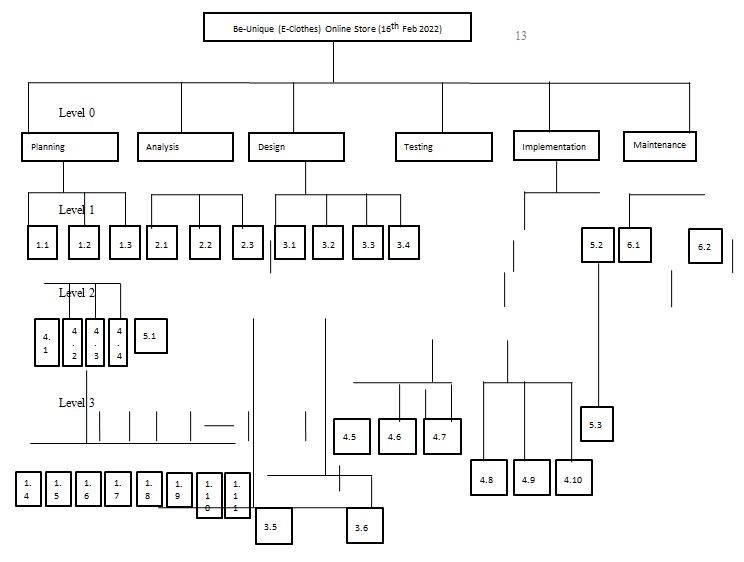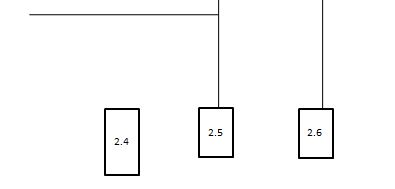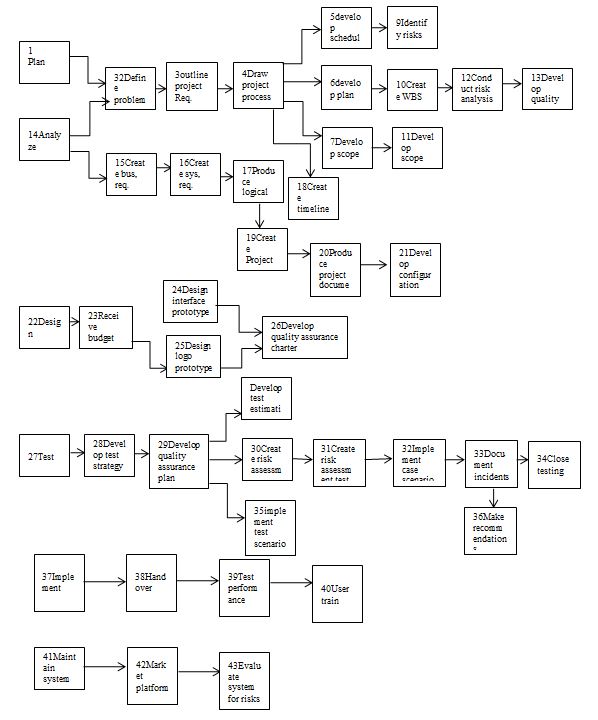The fashion industry is one of the most dynamic sectors around the globe, and the dynamism arises from the diverse needs of the client base. Fashion is a personal statement and a symbol of societal status that also defines a person’s culture and individuality. As a result, clients are always curious about fashionable pieces that serve several factors while maintaining a particular budget. Although many clothes stores stock a variety of fashionable clothes, they do not capture the clients’ personality and individual needs because the designs are premade. Most stores such as Zara and H&M invest significant funds into identifying the unique needs of their clients. However, their reach in identifying these needs is not yet global, and this implies that a significant section of the target market buys what is available. Therefore, bridging the gap between what the clients want from their preferred clothes stores and what the stores are offering is crucial in promoting customer satisfaction.
Our project, Be-Unique, intends to solve this problem by leveraging technology to bring the services closer to the clients. The purpose of the project is to provide a highly integrative platform through which customers can digitally access their favorite clothing stores. The platform intends to revolutionize the fashion industry by offering clients an opportunity to present their unique designs for customization. Online clothes from stores such as Zara and H&M are made using standard sizes that may not fit all body sizes within the standard measurements. Our online stores’ mandate is to ensure that clients have easy access to thigh-quality fashionable items that can be customized to fit their unique sizes. Therefore, our mandate will include offering the clients an opportunity to submit their sizes to our platform, whereby their clothes can be tailor-made to fit their unique sizes. Our highly skilled team will be on standby to take clients’ measurements and submit them to the famous clothes stores for customization.
Additionally, our project seeks to offer the clientele the option of designing and developing their unique designs from famous luxury clothes stores such as Zara and H&M. As aforementioned, clothes are a statement of personality, culture, and individuality. Therefore, our project will focus on promoting these aspects of fashion by allowing clients to make recommended changes to available designs online. Our project mission, utilizing local potentials in delivering high-quality unique clothes design made to customer preferences by using high quality, reliable efficient online platform interface which ensures high customer satisfaction, privacy, and security, will guide these business operations. The statement of work, a quality plan, the work breakdown structure, the Responsibility Matrix, and the project network diagram will highlight the project’s activities, objectives, quality assurance, and control methods, and work organization involved in completing the project.
Statement of Work
Defining the work details, the scope of the project, schedules, deliverables, terms and conditions, and the expected outcomes is crucial in ensuring that the team achieves all project objectives. Eman Al Ali shall be developing the online digital platform through which Zara and H&M clothing stores can supply their designs and offer re-designing services. Therefore, the contract will cover the agreement between these two entities, and it will ensure that each partner complies with their end of the bargain. Another contract will cover the agreement between Khalifa Fund for Enterprise Development and Eman Al Ali, who is the software and hardware developer. Khalifa Fund will provide the necessary financial resources to manage the project, and requires that the software/hardware provider complies with the terms and conditions. Other parties that will be involved in the project include the project manager and finance personnel, who will work in liaison with the project sponsor.
The Purpose and Objective of the Project
The primary aim of the project is to develop a platform that allows potential customers to interactively engage with established clothes stores like Zara and H&M. The interaction will offer customers an opportunity to purchase clothes from the online stores, while also enabling them to request custom-made outfits. Implementing this project will enable the clients to order custom-made fashionable clothes that define their personality and character, in contrast to the ready-made clothes that do not offer the uniqueness of individuality. The website, Be-Unique, will facilitate the interaction between the luxury clothing stores and our clients. Therefore, our objective is to also enhance client satisfaction through enhance service delivery.
Project Scope and Deliverables
The project team will take a variety of actions, processes, and steps to achieve the above objectives. The scope of work defines these steps and processes, and how the team will utilize each step to achieve the acceptable project outcome. The initial step will involve drafting contractual agreements with the partners, Zara and H&M companies. The contracts will comprehensively cover each party’s responsibilities, tasks, and duties. The table below represents the project’s overall scope:
Requirements and Tasks: Main Customer Requirements
Developing the Be-Unique website will involve a multitude of tasks and requirements from all stakeholders. The software development team will perform the bulk of the activities required to create and implement the website. Collaboration between all stakeholders will play a critical role in ensuring that the whole project is a success. A System Development Lifecycle Cycle, SDLC, will provide a guideline for tasks and requirements assessment. According to Brewer and Dittman (2018), the SDLC is a comprehensive logical model that outlines the procedures, processes, and policies that the project team should follow when developing or altering a system. SDLC framework has seven distinct phases, under which a variety of tasks and activities take place. The table below shows the requirements and processes for the different development steps of the project:
Time Frame and Budget
The time frame and budget outline the finances and time that the project team will require to complete the project. The table below highlights the budgetary requirements and time frame for the whole project:
Time Frame
Budget
Quality Plan
A project quality plan is a tool that the project team uses to promote quality assurance, and it outlines a set of systematic actions that the team must undertake to ascertain the integrity of the system and the standard of the final product (Laporte & April, 2018). The plan also highlights the activities, processes, and tools that the project management team and other stakeholders require to attain a high-quality final product. The quality plan falls under the maintenance phase of project development, which involves various actions and processes to maintain an error and defect-free system. The quality plan is also critical in maintaining the system’s overall security.
E-Clothes store is an online platform that seeks to bridge the gap between luxury clothes stores like Zara and H&M, and the customers in our country. Although the stores have a client base here, our online store will provide a more personalized platform where the clients can place requests for customized outfits. Previously, clients could place their orders directly from Zara and H&M’s online stores. However, the websites did not offer the clients an opportunity to purchase customized clothes. The client base in our country recognizes fashion as a social symbol, hence the need for customized pieces. Therefore, our platform will enable such clients to customize clothes and have access to cultural and traditional attires like the abaya dress. Maintaining the integrity of the online clothes store is crucial to the clients and our partners. The quality plan will play an important role in ensuring that the website’s quality aligns with the stakeholders’ requirements, in addition to reducing the risk of non-compliance and security threats.
The online store will be operational in our country and work in collaboration with stores from other countries. The labor laws, business practices, and business permits and compliance measures differ in these countries. The quality plan will outline all effective procedures necessary for quality planning, compliance, and reducing risk threats. Therefore, the plan will include quality assurance and control methods, quality standards, quality codes, and essential tests.
Quality Assurance and Control Methods
Quality assurance and control methods play a crucial role in ensuring the quality and integrity of a project. Laporte and April (2018) define quality assurance as a process of ensuring that the project processes efficiently utilize the available resources to generate the expected outcomes. Optimizing the resources, including human resources, time, and finances promote efficiency and reduce the risk of waste and losses. Laporte and April (2018) acknowledge that human is to err and recommend using various quality assurance methods to promote the projects’ integrity. Quality assurance focuses on the whole system, rather than separate the project’s sections like the source code. Securing the source code only would not be sufficient assurance of the project’s quality. Therefore, the team will implement an integrated quality assurance strategy.
Quality planning also involves implementing quality control measures to enhance the integrity of the system. Quality control involves regular inspection, testing, and frequent measures against the quality standards to ascertain that the product meets the quality standards and the client’s needs (Ibarra & Muñoz, 2018). The primary role of quality control is to prevent internal and external problems that may interfere with the efficiency of service delivery. Quality assurance and control are essential to E-Clothes online store because they will earn the partners’ and clients’ trust. Therefore, the quality plan will be an integrated document that specifies the standards, practices, resources, and activities associated with the E-Clothes store.
Developing the plan will involve several crucial steps that guarantee comprehensive coverage of the whole system in quality assurance. The first step will involve identifying various problem areas that may compromise the quality of the system (Ibarra & Muñoz, 2018). Areas of focus will include the processes the software developer used to develop the source code, overall project objectives, responsibilities and duties, procedures, and areas of testing such as the source code. The next step will involve identifying the measurement indicators or key indicators. The indicators will provide the baseline on which the project team can compare quality assurance and control measures after testing. The indicators will also help the project manager to determine whether the quality control measures achieve their intended purpose.
Comparing the system’s quality before and after implementing the quality assurance and control measures will be the next step in the quality plan. The comparison will demonstrate whether the quality control and assurance measures effectively address the identified problem areas (Ibarra & Muñoz, 2018). Assessment analysis will be the last quality assurance and control process, and it will aim at measuring the outcomes of the quality measures. It is important to note that quality assurance and control is an iterative and continuous process. The table below is a representation of the E-Clothes store’s quality plan components:
Quality Assurance and Control Methods that Will Be Used in the Project
There are various quality assurance and control methods available to the project management team. The suitability of each method largely depends on the user requirements, the complexity of the system, and the comprehensibility of the system outcomes. Involving a quality assurance team is the first step towards conducting a proper system analysis. E-Clothes online store will utilize the Plan-Do-Check-Act method of quality assurance and control. The method will cover various areas of quality check, including product review, user training, compliance with standards, the strength of the source code, the efficiency of the administration, and processes.
The Plan-Do-Check-Act method comprises four distinct steps that enable project managers to identify weaknesses and areas of improvement within the project. The first step, plan, involves a comprehensive analysis of the project’s objectives, professional standards, customer and stakeholder expectations, performance measures, and quality processes (McGrath & Loper, 2018). This step takes place during the planning, analysis, and design phases, which helps the project manager to align the objectives with the final product. The second step, Do, involves aligning all processes, procedures, and activities with the approved standard operating procedures. The step also ensures that the project does not violate any laws and that all procedures and processes comply with the existing laws. For example, there are federal laws that govern e-commerce, online transactions, and cyber activity in the UAE. Quality assurance technique will ensure that our project does not violate Federal law No.1 on e-commerce and online transactions, and decree federal law on cybercrime.
On the other hand, quality control will conduct regular checks and frequent updates on the system to reinforce security against cyber threats and enhance the quality of the system. Systems that involve online financial transactions are particularly the target of cybercriminals who conduct cyber fraud. Therefore, the aim of the quality assurance and control team under the Plan-Do-Check-Act method will be to identify weak areas that may predispose the system to such threats. The third phase, check, will involve performing technical reviews, verifications, and management oversights and comparing them to the project management standard operating measures (McGrath & Loper, 2018). This phase also involves checking whether the client’s quality objectives align with the project’s processes and procedures. The project management team conducts this phase during the project execution and maintenance phases of the SDLC.
The final step in the quality assurance and control method that the project team will use is Act, which involves instituting corrective measures against performance measures that surpass performance thresholds. This step relies on the outcomes of the first three phases to institute the corrective measures (McGrath & Loper, 2018). Deficiencies, non-performance, noncompliance, defects, and other errors are corrected at this stage. Project managers institute this process at the testing, execution, and maintenance phases of the SDLC. The Plan-Do-Check-Act quality assurance and control method will be useful to the E-Clothes project as it will help the management team to maintain the quality of the system.
Work Breakdown Structure
Effective project management relies on important tools such as the work breakdown structure, WBS. WBS is a product-oriented tool that consists of various work elements that define the project scope (Burghate, 2018). The multi-level graphical representation of the project activities, processes, procedures enables project managers to easily identify project priorities and relationships. The logical diagram is made up of descending levels of project components that transcend the previous activities. All activities in the WBS are scheduled, budgeted, and estimated, and should contain the scope, schedule, and cost (Burghate, 2018). E-Clothes WBS consists of the primary outcome or deliverable, which is the complete online clothing store. The project management team will achieve the final product by breaking down activities into five broad categories – planning, analysis, design, execution, and maintenance. The categories will be further broken down into individual tasks as outlined in the WBS table. Each task will be completed within its schedule as highlighted in the Gantt chart, with the activities following each other consecutively. Completion of one task will be followed by the immediate initiation of another, which will help the project manager to complete the project within the given schedule. The diagram below represents the WBS for E-Clothes online store:


Work Breakdown Structure Key
Responsibility Assignment Matrix (RAM)
Collaboration between different organizations, agencies, and people plays a crucial role in successful project completion. The E-Clothes project will engage various providers, including vendors, a sponsor, the software developer, finance personnel, and the project manager. A successful partnership between the team members will promote the successful completion of the project by averting wastage of time and resources. The cooperation will also be essential in establishing responsibilities and accountability between the key players. A responsibility assignment matrix, RAM, is a diagrammatical representation of the relationship and participation between the different key players in a project. Project managers utilize RAM to clarify team members’ roles and responsibilities throughout all project development stages. The matrix is important in distinguishing responsibilities from accountability during project development.
Project Network
Justifying the time schedule and budgetary requirements is important in providing a rationale for the project. Sponsors want to invest in projects that make sense in terms of financial investment and time. A project diagram provides a rationale for the financial and time investment in a project. The network is a logical representation of the order in which the project team must complete all activities. The diagram highlights the project activities, time schedule, and relationships between the different tasks. The team must conduct these activities sequentially, and this order ensures that the project management team does not overlook or omit any activity or task. The network structure also helps the project manager to clearly delineate the roles and responsibilities. E-Clothes online store project will involve various tasks, activities, and processes that will be performed sequentially. The network diagram below will identify the primary and secondary tasks and activities that will be involved during the development of the E-Clothes store project. The table shows the actual tasks that the team will complete at each phase and the final product that the project owner will receive.

Key
References
Brewer, J. L., & Dittman, K. C. (2018). Methods of IT project management. Purdue University Press.
Burghate, M. (2018). Work breakdown structure: Simplifying project management. International Journal of Commerce and Management, 3(2), 453-461.
Ibarra, S., & Muñoz, M. (2018). Support tool for software quality assurance in software development. In 2018 7th International Conference On Software Process Improvement (CIMPS) (pp. 13-19). IEEE.
Laporte, C. Y., & April, A. (2018). Software quality assurance. John Wiley & Sons.
McGrath, E., & Loper, K. (2018). Quality Management. In Establishing a Hematopoietic Stem Cell Transplantation Unit (pp. 219-230). Springer, Cham.